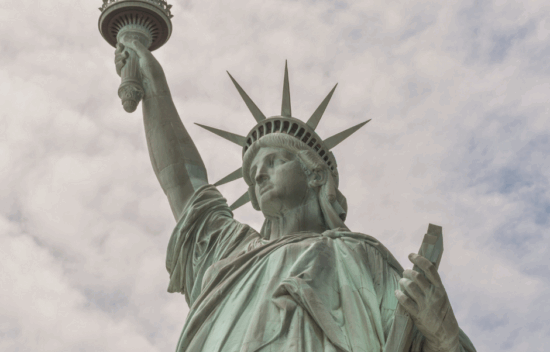
Party Lines: The Rise of Federalists and Democratic-Republicans
Guiding Question
- How did the emergence of political parties influence the development of American democracy?
Objectives
- Students will analyze how political parties emerged in the Early Republic, comparing the beliefs of Federalists and Democratic-Republicans and evaluating how their debates shaped the young nation.
- Students will debate and role-play political differences.
- Students will research historical political parties.
- Students will connect history to real-world politics.
Student Resources:
- Early Republic Interactive Timeline
- Party Profile Handout
- The Rise of America’s First Political Parties Essay
Teacher Resources:
- “Strong Federal Government” and “State Powers” labels for sides of the classroom
- Cards or images to represent events on the timeline
- BRI Resources for research or teacher background knowledge:
Facilitation Notes
- This lesson plan utilizes the timeline as well as other resources to build student knowledge about the development of political parties in the early republic.
Anticipate
- Glossary terms: Terms used in this lesson for pre-teach opportunities or vocabulary support:
- Political parties
- Federal
- Spectrum
- Campaign
Pick a Side! Debate Warm-Up
- Transition: Label one side of the room Strong Federal Government and the other State Powers.
- Pose the question or write on the board: Should the U.S. have a strong federal government or should states have more power?
- Have students move to the side that aligns with their initial opinion.
- Each side discusses reasons they chose that position, then a few students share their thoughts.
- Tell Students: This debate was one of the biggest in early American politics-and it led to the first political parties!
Engage
Party Profiles (Jigsaw Activity)
- Split students into two groups:
- Federalists
- Democratic-Republicans
- Each group receives a Party Profile Worksheet with these categories:
- View on government power (strong federal vs. state powers)
- Economic vision (manufacturing/trade vs. agriculture)
- View on foreign policy (pro-British vs. pro-French)
- Who supported them? (city businessmen vs. rural farmers)
- Each group researches their party (using class-provided sources) and completes their worksheet.
- Groups pair up (one Federalist, one Democratic-Republican) and teach each other their findings.
Explore
Political Party Spectrum
- Draw a political spectrum on the board and label the ends:
- Left side of board: Strong state governments (Democratic-Republicans)
- Right side of board: Strong federal government (Federalists)
- Have students place different historical events or ideas from the Early Republic Interactive Timeline (Neutrality Proclamation, Alien & Sedition Acts, Louisiana Purchase, etc.) along the spectrum based on which party supported them.
- Discuss: How did these differences create political tensions?
Assess & Reflect
- “Campaign Time!”:
- Students create a campaign poster or speech for either a Federalist or a Democratic-Republican.
- Requirements:
- A catchy slogan
- A main policy idea (e.g., “Support manufacturing!” or “Defend farmers’ rights!”)
- A symbol or drawing representing the party’s beliefs
- Students present their campaign materials in small groups or to the whole class.
- Collect the posters or speeches for assessment, if needed.
AND/OR
- “If I Were a Voter…” Reflection:
- Students answer in their journals:
- If you lived in the Early Republic, which party would you have supported and why?
- Which political debate do you think was most important?
- Quick class share-out: Are there any modern political debates that remind you of these early party conflicts?
- Students answer in their journals: